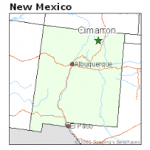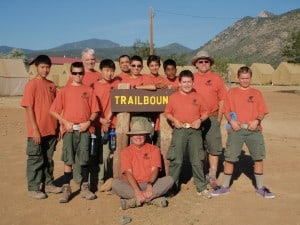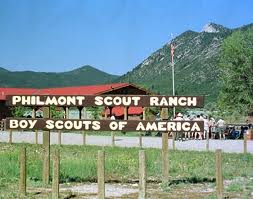
As Spring approaches, hundreds of Boy Scouts and Scouters across the United States are preparing for their trip to Philmont this summer. After winning a lottery to secure a spot, and after collecting payments over the past year, it now becomes very real for the 20,000 hikers who will converge on the small town of Cimarron, New Mexico – gateway to the Ranch.
Some units go to Philmont every other year and have an established routine. Pull out the planning schedule from last time, change the dates, and get started. Other groups have never been backpacking and need to start from scratch as they try and learn how to hike together and camp in the back country. For them it is an exciting and scary scramble from the first meeting to the last practice hike.
By now most basic transportation decisions transportation have been made. Will the group be flying into Albuquerque or Fort Collins, or maybe taking the train to Raton? Some units will opt for the convenience of driving their hikers and equipment, often with rented vans. Many Scouts and leaders will suddenly become of aware of the BSA requirement that all travel be done in full Class A uniform and some will think that this is annoying. However, on the actual trip they will find that the uniform magically connects them with fellow travellers who were also Boy Scouts and who also went to Philmont. In this way, the boys will get a better perspective on the pervasiveness and influence of the Scouting movement in America.
Sightseeing in New Mexico or Colorado before or after the hike is a natural extension of the outing, and Scouts will soon have to decide where they want to go. Should they travel up to bustling Santa Fe for a history lesson or head over to dreary Taos to see the pueblos. Bandelier National Monument is nice, but the Sandia Peak Tramway is more exciting. Visit Los Alamos and learn all about the Manhattan Project or get over to Roswell and see “evidence” of flying saucers. It would also be fun to take a hot-air balloon ride (probably not BSA approved) and there are lots of museums of all kinds in the area just in case.
Mistakes will be made. Some units will decide that coordinated practice hikes are a waste of time, telling everyone to get into shape on their own. Participants will respond, form small groups, and try, with varying dedication, to prepare for the “big trip.” These unprepared groups will suffer the most as untested equipment breaks down on the trail to the Tooth of Time or Mt. Baldy, and tempers flare as hikers constantly work through the “storming” phase of team development. Not to mention the physical problems they are likely to encounter.

Stronger units will arrive at Base Camp knowing the Philmont Hymn because they have been singing it continuously at planning sessions and team conditioning hikes. For them, the Philmont experience started at their very first meeting, carried through to the practice hikes, CPR and Wilderness First Aid Training classes, fundraisers, and the pizza stops on the way home from camping trips. This kind of group creates their own Philmont shirts, with everyone’s name on the back, and wears them proudly during the orientation on Day One. These hikers will have the most fun together on the trail.
Scouts and Scouters start with a common objective – get to Philmont and have a fun adventure – but every unit will take a different route. Many groups will achieve their objective (and more) and will want to return as soon as possible. However, through lack of leadership, planning, preparation, or simply bad luck, some units will have a terrible experience and complain about it forever. No matter how it turns out, after returning home, everyone will tell friends and family that Philmont was a life-changing experience.

